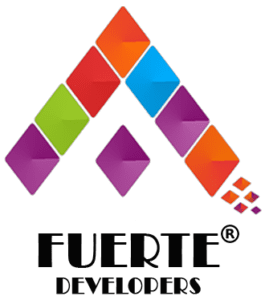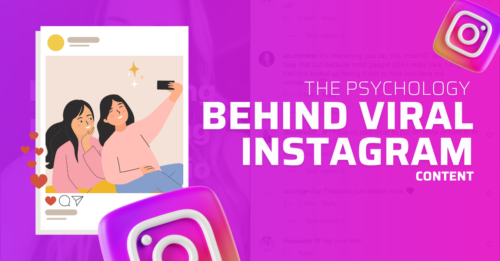Introduction: Navigating the Digital Landscape
In today’s competitive digital environment, businesses must navigate the intricacies of organic and paid traffic to optimize their marketing strategies effectively. The interplay between Search Engine Optimization (SEO) and Search Engine Marketing (SEM) determines a brand’s online visibility, engagement, and ultimately, its return on investment (ROI). While SEO builds long-term credibility, SEM provides immediate visibility—striking a strategic balance between the two is key to achieving sustained digital success.
At Fuerte Developers, we specialize in data-driven digital marketing strategies, integrating AI-powered predictive analytics, custom software solutions, CRM integration, and performance marketing to help businesses optimize their online presence. In this article, we explore the differences between SEO and SEM, their respective advantages, and how businesses can leverage both effectively to maximize ROI.
Understanding the Role of Organic and Paid Traffic
Organic Traffic: The Power of SEO
Organic traffic is generated through unpaid search results, emphasizing content quality, technical optimization, and strategic keyword implementation. SEO is a long-term investment that enhances a website’s authority, making it more likely to rank highly on search engine result pages (SERPs).
Advantages of SEO
- Cost-Effective: No direct ad spend—requires consistent optimization efforts.
- Builds Brand Credibility: Users trust organic search results over paid advertisements.
- Sustainable Growth: Once established, organic rankings drive continuous traffic without recurring costs.
- Higher Click-Through Rates (CTR): Studies indicate that organic listings receive more clicks than paid advertisements.
Challenges of SEO
- Time-Intensive: Achieving high rankings takes months of optimization.
- Algorithm Variability: Google frequently updates its search algorithms, impacting rankings.
- Competitive Landscape: Saturated industries require comprehensive SEO strategies to stand out.
Paid Traffic: The Precision of SEM
SEM utilizes paid advertisements, including Google Ads and social media promotions, to ensure brands appear prominently on search results. SEM offers immediate visibility, targeting specific audiences based on keywords, demographics, and user behavior.
Advantages of SEM
- Instant Traffic: Paid campaigns generate immediate engagement.
- Highly Targeted: Ads are tailored based on audience preferences and search intent.
- Budget Control: Businesses can allocate funds strategically to optimize ROI.
- Effective for Promotions & Product Launches: Ideal for short-term, time-sensitive campaigns.
Challenges of SEM
- Requires Continuous Investment: Visibility depends on ongoing ad spend.
- Lower Trust Compared to Organic Results: Users often prefer organic rankings over paid advertisements.
- Competitive Keyword Bidding: High-demand keywords lead to increased cost-per-click (CPC).
Strategies for Balancing SEO and SEM for Maximum ROI
1. Utilize SEM for Immediate Visibility, SEO for Long-Term Authority
Businesses should launch SEM campaigns to drive traffic instantly, while simultaneously investing in SEO to build lasting credibility and reduce long-term advertising costs. A balanced approach ensures both immediate engagement and sustainable growth.
2. Target Transactional Keywords with SEM, Informational Keywords with SEO
SEM campaigns should prioritize high-intent transactional keywords to attract users ready to convert (e.g., “buy CRM software”), while SEO should target broader, educational keywords to establish authority (e.g., “best CRM systems for small businesses”).
3. Optimize Landing Pages for Enhanced Conversion Rates
Regardless of whether traffic is organic or paid, optimized landing pages are essential for conversions. Businesses should:
- Ensure fast-loading pages for better user experience.
- Implement clear call-to-action (CTA) buttons.
- Enhance mobile responsiveness for accessibility.
4. Leverage SEO Data to Refine SEM Targeting
SEO analytics provide valuable insights into user intent, high-performing keywords, and engagement metrics. Businesses can utilize this data to optimize SEM bidding strategies and improve ad targeting.
5. Retarget Organic Visitors Using Paid Ads
Users arriving via organic search may not convert immediately. Implementing retargeting strategies through SEM allows businesses to engage these potential customers and increase conversion opportunities.
6. Continuously Monitor Performance and Adjust Strategy
A successful SEO-SEM balance requires ongoing analysis. Businesses should regularly review Google Analytics, Search Console, and SEM data to identify trends, optimize campaigns, and refine digital marketing approaches.
Conclusion: Maximizing ROI with a Holistic Digital Strategy
Balancing SEO and SEM is critical to achieving sustainable digital success. While SEO fosters brand credibility and long-term growth, SEM provides immediate visibility and targeted engagement. Businesses must adopt a strategic approach that leverages the strengths of both methodologies, ensuring cost-effectiveness, enhanced customer experience, and optimized ROI.
At Fuerte Developers, we empower businesses with data-driven digital marketing solutions, integrating SEO, SEM, AI-based predictive analytics, and performance marketing to drive measurable results. Whether you are a startup or an enterprise, we can help you forecast customer needs and scale efficiently.
Ready to refine your digital strategy for maximum ROI? Connect with us today!
Follow Us | Our Services | Contact Us







